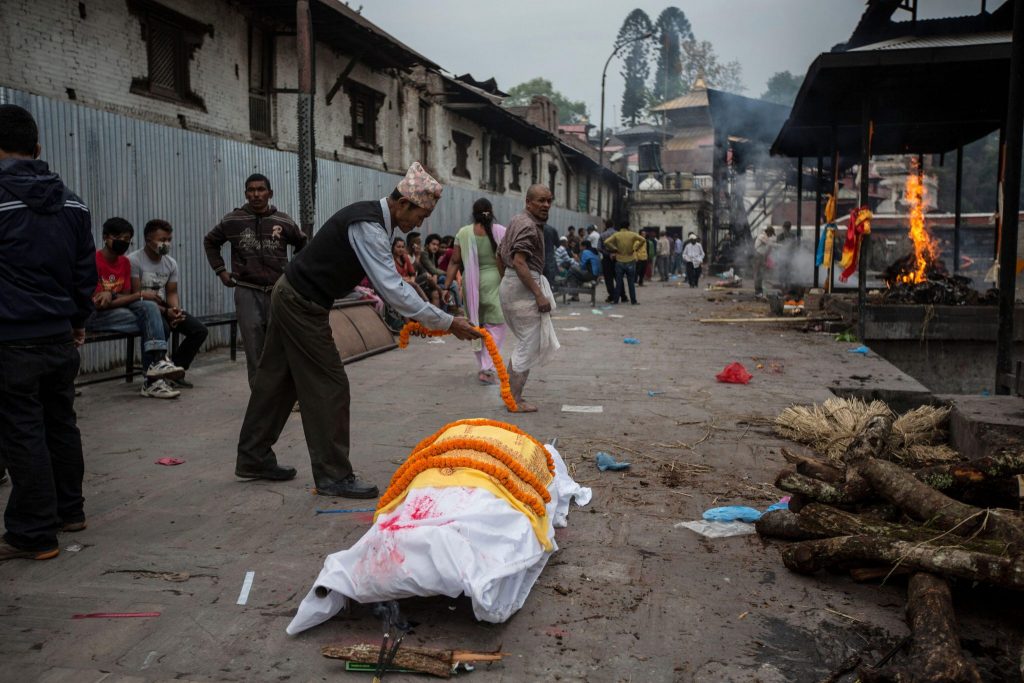The deaths of migrants in the Gulf
REPORT 1 / MARCH 2022


The Vital Signs Partnership is a group of organisations working together to campaign for better protection for low-paid migrant workers in the six countries of the Gulf Cooperation Council (GCC). The partnership includes the Center for Migrant Advocacy in the Philippines, the Centre for Indian Migrant Studies, the Law and Policy Forum for Social Justice in Nepal, Justice Project Pakistan, and the Refugee and Migratory Movements Research Unit in Bangladesh. Supporting organisations include Migrant-Rights.org, which documents migrant workers abuses within the GCC, and Migrant Forum Asia in the Philippines. The project is overseen by FairSquare Projects, a non-profit human rights organisation based in London.
Design by www.NickPurserDesign.com / Cover photograph: Cremation ceremony of a migrant worker who had been working in the Gulf. Nepal, 2014. © Matilde Gattoni
Contents
CONTENTS
Executive Summary 4
- About this report
1.1. Methodology
1.2. The Vital Signs Partnership - What we know about the numbers and causes of death of migrants in the Gulf
2.1. Origin states
2.1.1. Bangladesh
2.1.2. India
2.1.3. Nepal
2.1.4. Pakistan
2.1.5. The Philippines
2.2. Destination states
2.2.1. Bahrain
2.2.2. Kuwait
2.2.3. Oman
2.2.4. Qatar
2.2.5. Saudi Arabia
2.2.6. UAE
2.3. Summary of availability of data on migrant deaths in the GCC state - Concerns about investigations into migrant deaths
3.1. Compensation - Risks to workers’ health in the Gulf
4.1. Working and Living Conditions
4.1.1. Overwork
4.1.2. Heat stress
4.1.3. Air pollution
4.1.4. Physical and psychological abuse
4.1.5. Living conditions
4.1.6. Workplace accidents
4.2. Psychosocial stress
4.3. Access to physical and mental healthcare
4.4. The Impact of Covid-19 on Migrant Workers - Conclusion and recommendations
- Recommendations to the governments of Gulf Cooperation Council (GCC) states
- Recommendations to the governments of origin states

© Narayan Maharjan/NurPhoto/Getty Images
EXECUTIVE SUMMARY
The economies of the six oil-rich Gulf states of Bahrain, Kuwait, Oman, Qatar, Saudi Arabia and the United Arab Emirates (UAE) are highly dependent on low-paid migrant workers from Asian states such as India, Nepal, Pakistan, Bangladesh, Sri Lanka, and the Philippines. These workers sustain a wide range of sectors, from domestic service, to hospitality, to construction. Despite widespread criticism of their systematic abuse and exploitation in the international media- notably in relation to Qatar’s preparations to host the 2022 World Cup – the Gulf states have largely avoided structural labour reforms, and origin states have been unable to ensure proper protection for their nationals abroad. The perceived benefits of outward migration for origin states, combined with vested interests in the south Asian and southeast Asian recruitment industry, and the Gulf states’ effective use of their economic and political leverage, in large part explains why origin states have never collectively demanded better protection for their workers. Whereas rights groups, trade unions, academics and the media have extensively documented the serious abuses to which these workers are routinely subjected, and identified the laws and policies and practices responsible, there is a
critical gap in this body of research: nobody knows how many of these workers are dying, or the causes of their deaths.
This project sets out to answer these questions and to propose and advocate for policies that will better protect the health and lives of low-paid migrant workers in the Gulf and ensure compensation for the families of those who have died needlessly. The purpose of this initial report, which will be supplemented by more detailed reporting on key thematic issues in 2022 and 2023, is to present a general overview of what we currently know about this issue.
Cumulative risks to health of low- paid migrant workers
There are approximately 30 million migrants in the Arab Gulf states, accounting for 52% of the region’s total population of 58 million.1 A significant proportion of these migrants – between 70 and 80% – work in low-paid sectors of the Gulf states’ economies.
THE DEATHS OF MIGRANTS IN THE GULF
A Nepali mother at Tribhuvan International Airport, Kathmandu, Nepal in June, 2020 after the body of her daughter, who had been working in the Gulf, was returned to the country.
© Narayan Maharjan/NurPhoto/Getty Images
EXECUTIVE SUMMARY